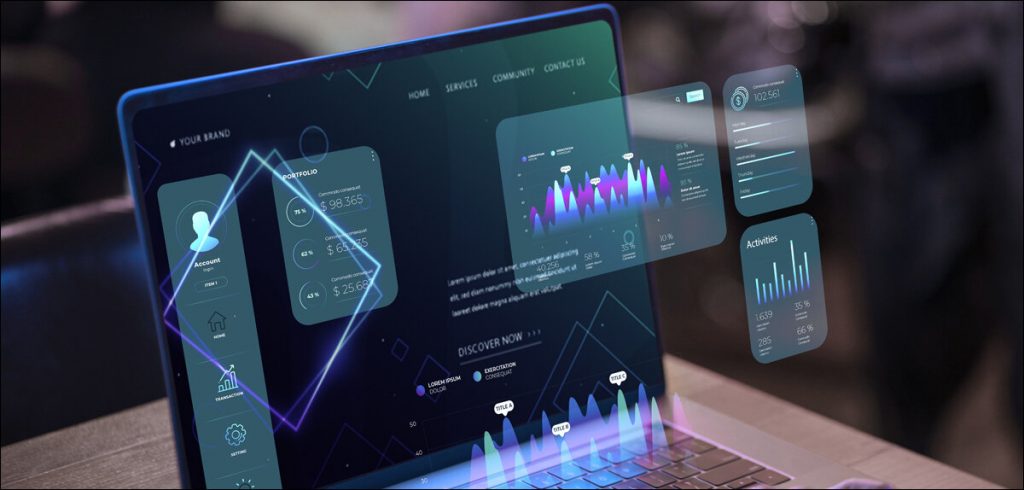Struggling to unleash the power of your enterprise data? Discover how data fabrics can revolutionize your organization’s data management approach.
In the data-driven world we live in, organizations are drowning in data. From customer interactions to supply chain logistics, marketing campaigns to financial records – data is being generated at an unprecedented rate. But simply having data isn’t enough. The real challenge? Harnessing the immense value locked within those vast data stores.
Enter data fabrics. A revolutionary approach to data management that promises to transform the way enterprises leverage their information assets. But what exactly is a data fabric? And why should you care?
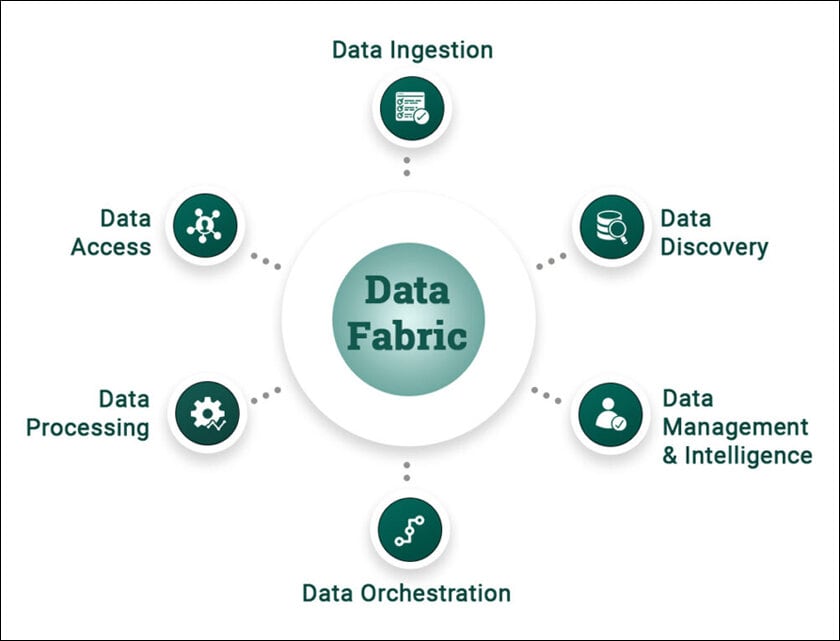
What is a Data Fabric?
A data fabric is a unified architecture that integrates data from multiple sources, both on-premises and in the cloud. It acts as a seamless layer, connecting disparate data silos and providing a single, consistent view of an organization’s data landscape.
Think of it as a virtual data layer that abstracts away the complexities of underlying data sources, formats, and storage locations. No more wrestling with siloed databases, incompatible schemas, or complex data pipelines.
At its core, a data fabric enables frictionless data access, integration, and governance across the enterprise.
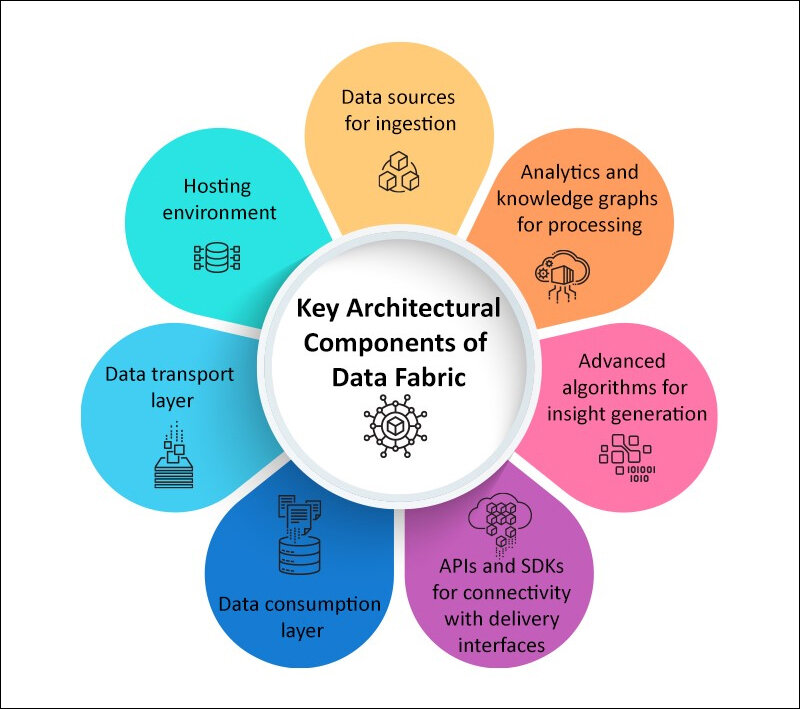
Why Do You Need a Data Fabric?
In today’s fast-paced business environment, data agility is paramount. Organizations need to quickly access, combine, and analyze data from various sources to drive insights and decision-making. Traditional data management approaches simply can’t keep up.
A data fabric solves this challenge by providing:
1. Faster time-to-insight
2. Improved data quality and consistency
3. Enhanced data security and governance
4. Increased business agility and innovation
With a data fabric, analysts and data scientists can spend less time wrangling data and more time extracting valuable insights. Business leaders can make informed decisions based on a comprehensive, real-time view of their data assets. And IT teams can streamline data management processes, reducing complexity and costs.
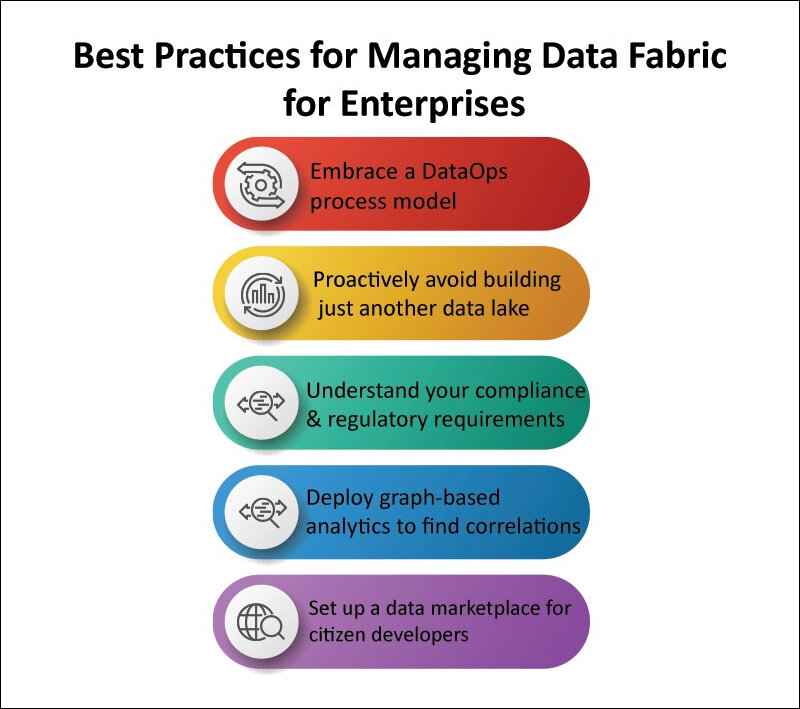
Key Features of a Data Fabric
While specific implementations may vary, most data fabrics share a few key features:
– Metadata-driven architecture: A centralized metadata repository that provides a unified view of data assets, lineage, and relationships.
– Automated data integration: Built-in tools for seamless data ingestion, transformation, and integration from multiple sources.
– Hybrid and multi-cloud support: The ability to span on-premises, cloud, and multi-cloud environments.
– Data virtualization: A virtual data layer that provides a consistent, abstracted view of underlying data sources.
– Data governance and security: Robust governance, access controls, and data privacy measures.
– Self-service capabilities: Easy-to-use interfaces that enable business users to access and analyze data without relying on IT.
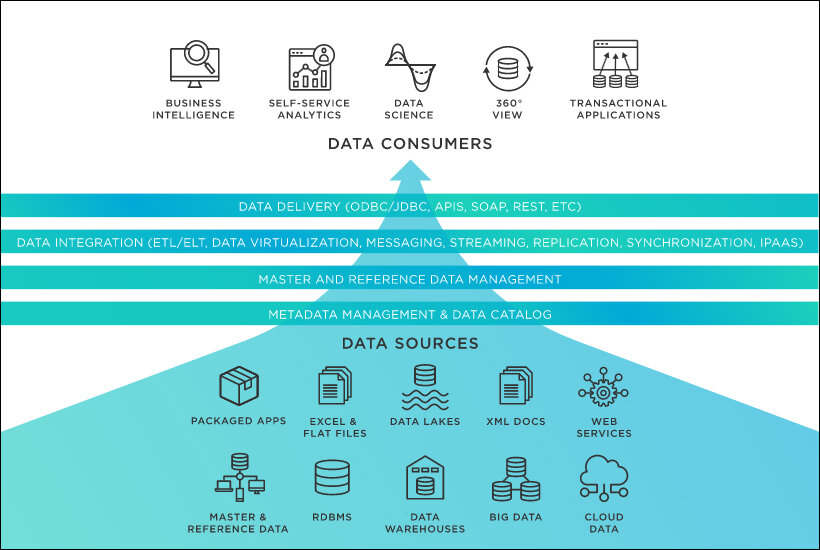
Is a Data Fabric Right for Your Organization?
While the benefits of a data fabric are clear, implementing one is no small feat. It requires a significant investment in technology, resources, and cultural shift within the organization.
Before embarking on a data fabric journey, consider these factors:
– Data complexity: Do you struggle with data silos, inconsistencies, and integration challenges?
– Analytics needs: Is rapid, self-service data access and analysis critical for your business?
– Cloud strategy: Are you embracing a hybrid or multi-cloud approach?
– Data governance requirements: Do you need to strengthen data security, privacy, and regulatory compliance?
If you answered “yes” to any of these, a data fabric could be the solution you’ve been seeking.
The Road Ahead
As data continues to grow, the need for a unified, agile data management approach will only intensify. Data fabrics represent a paradigm shift, empowering organizations to unlock the true potential of their data assets.
While implementing a data fabric is no small undertaking, the rewards can be faster insights, better decision-making, increased innovation, and a competitive edge in the data-driven economy.
Are you ready to weave your data fabric?
In case you missed:
- None Found




